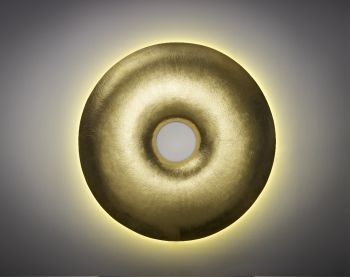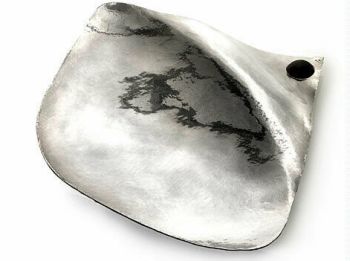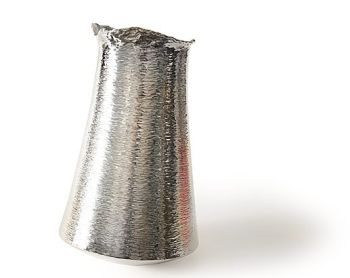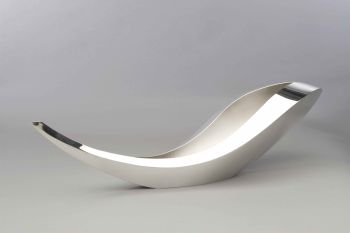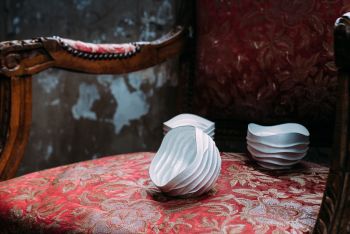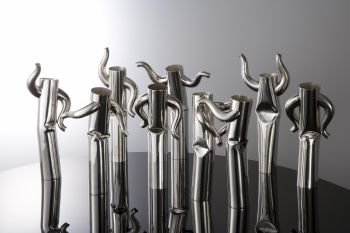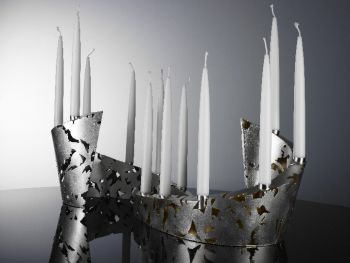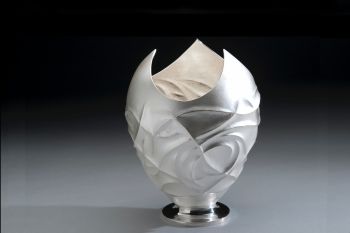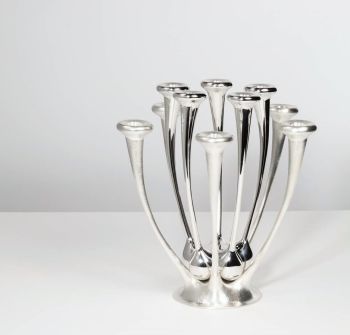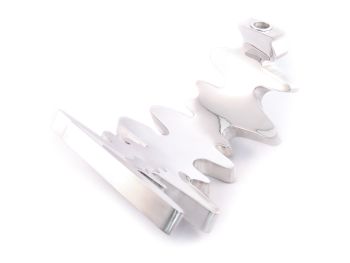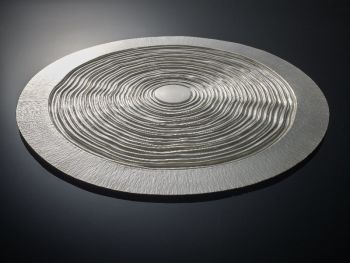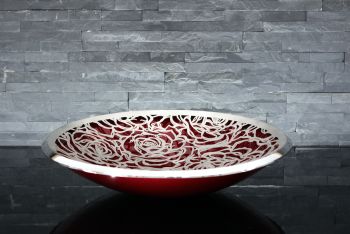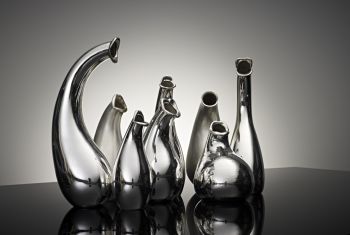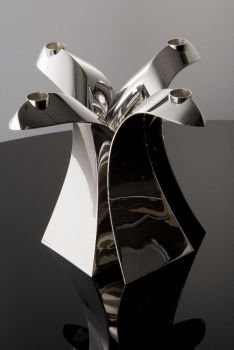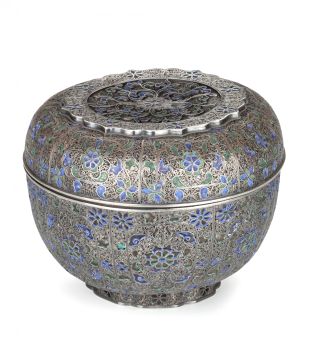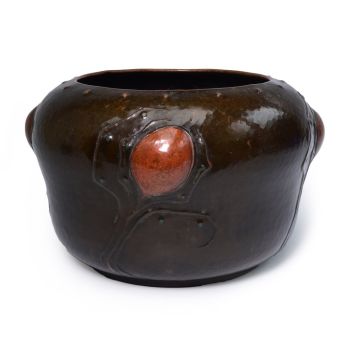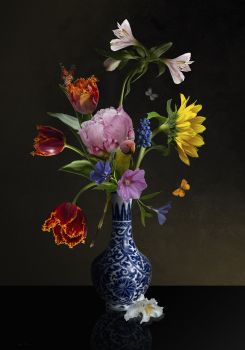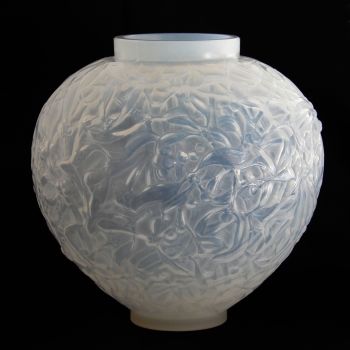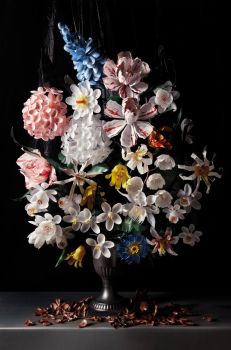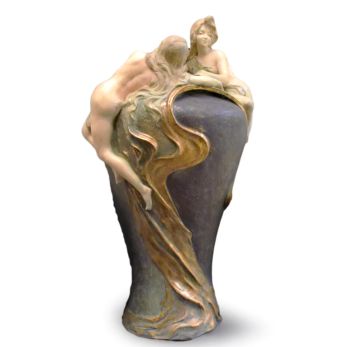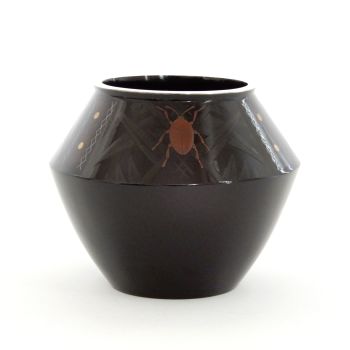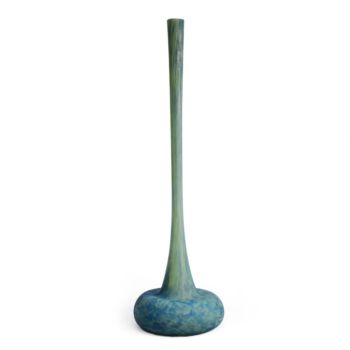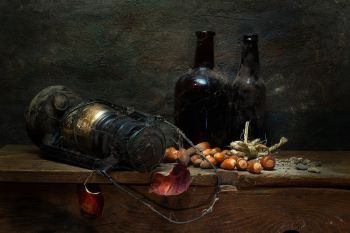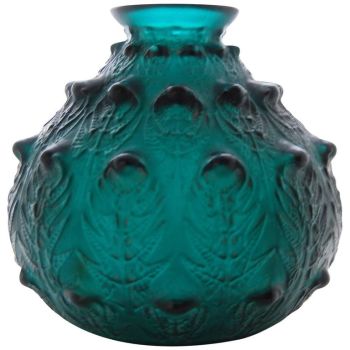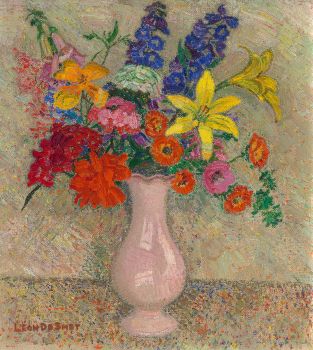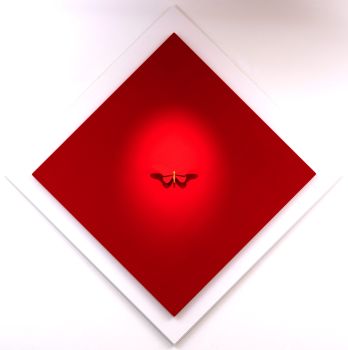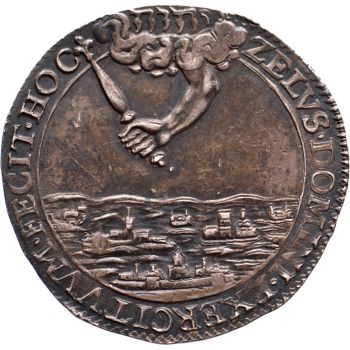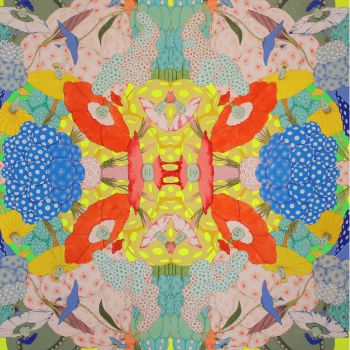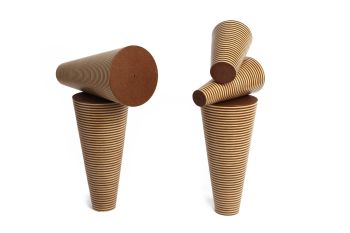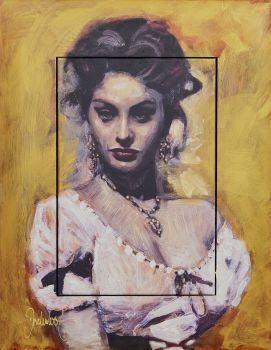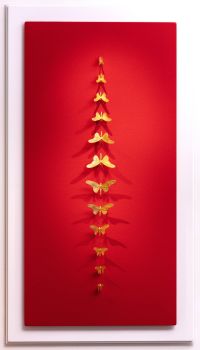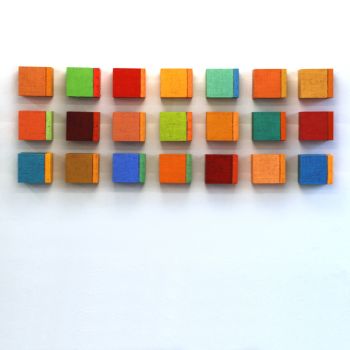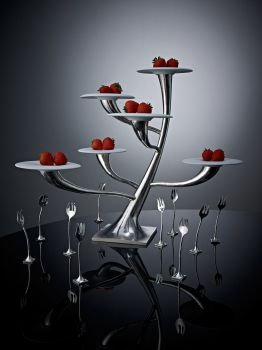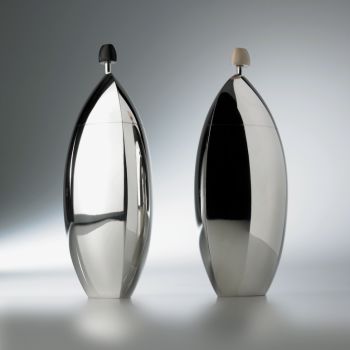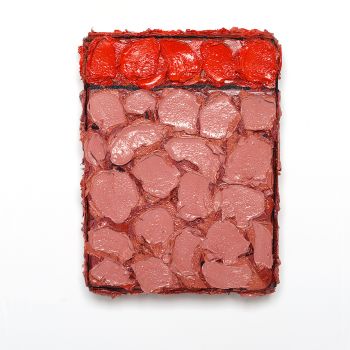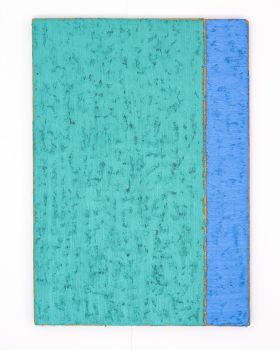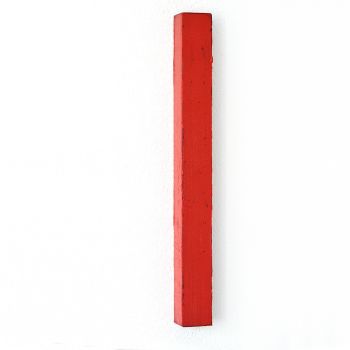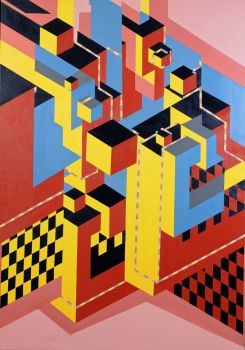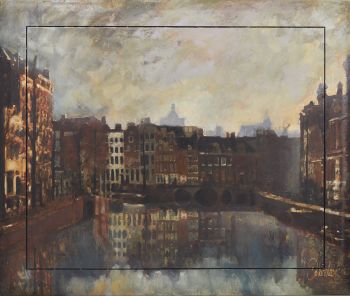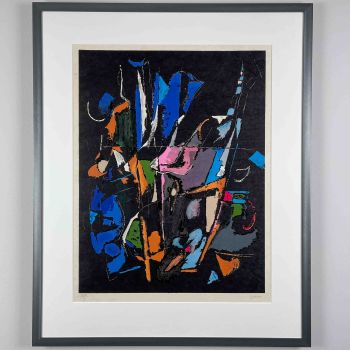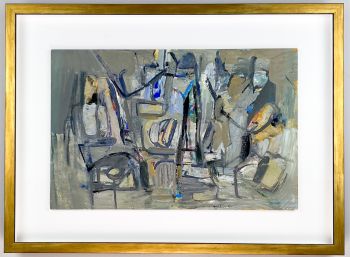Scandinavian Modern silver vase on teakwood stand, model TW 17 – Kultakeskus, Finland 1964 1964
Tapio Wirkkala
HolzSilberTeakholz
20 ⨯ 4 ⨯ 4 cm
ConditionVery good
€ 850
Van Kerkhoff Art
- Über KunstwerkA Modernist Sterling silver vase on teakwood stand, model TW 17. Designed by Tapio Wirkkala in 1954 and handmade by the craftsmen of Kultakeskus in 1964.
Model TW 17 was produced in serial production and could be bought either with or without the hardwood stand. Kultakeskus made the object in only one size.
This particular example includes the teakwood stand and was made in 1964. It is fully hallmarked on the side near the base and is in very good condition.
About Tapio Wirkkala
Tapio Wirkkala (1915 Hanko, Finland – 1985 Helsinki, Finland) A giant of Finnish design, possessed an extraordinary creative spirit that knew no boundaries. His artistic repertoire traversed diverse materials and transcended conventional design disciplines, leaving an indelible mark on the world of art and craftsmanship.
The trajectory of Wirkkala’s illustrious career was set in motion by a momentous glass design competition held by the revered Iittala glassworks in 1946. It was during this transformative event that Wirkkala, alongside the esteemed Kaj Franck, emerged as the joint recipients of the first prize. This recognition propelled Wirkkala into the spotlight, setting the stage for his remarkable artistic journey.
Wirkkala’s creative genius knew no bounds. His oeuvre spanned a vast spectrum, encompassing exceptionally beautiful glass art pieces, innovative industrial designs such as beer bottles and banknotes, meticulously crafted jewelry, evocative sculptures, and thoughtfully designed furniture. Each creation bore the unmistakable imprint of Wirkkala’s artistic prowess, showcasing his mastery over form, function, and aesthetics.
Throughout his illustrious career, Wirkkala amassed a multitude of accolades, honorary titles, and a doctorate, cementing his position as one of the most revered figures in the design world. His remarkable achievements include three Grand Prix medals at the prestigious Milan Triennale in 1954, followed by yet another Grand Prix medal and gold medal at the Milan Triennale in 1960. These prestigious awards not only celebrated Wirkkala’s unrivaled talent but also underscored his profound impact on the global design landscape.
Wirkkala’s creative journey was an embodiment of innovation, pushing the boundaries of design and challenging conventional norms. His unparalleled ability to infuse beauty into everyday objects and elevate them to the realm of art garnered admiration and acclaim from enthusiasts and experts alike.
Today, we celebrate Tapio Wirkkala as a visionary pioneer who seamlessly merged artistry with functionality. His enduring legacy serves as a testament to the limitless possibilities of design, inspiring generations of artists and designers to think beyond the confines of tradition and embrace their creative instincts.
Marked
TW (Tapio Wirkkala), 916H (916/1000 silver fineness), Kultakeskus Oy mark (reclining lion) and Finish National control mark (heart and crown). Yearmark L7 (1964).
Execution
Kultakeskus Oy, Hämeenlinna, Finland 1964
Condition
This Art object is in good condition, Some minor scratches consistent with age and use. No dents or inscriptions.
Literature
Marianne Aav, Tapio Wirkkala eye, hand and thought: p. 172 (illustrated), p. 360
Dimensions
Height 20 cm
Width 4 cm
Depth 4 cm
Weight 95 grams - Über Künstler
Tapio Wirkkala (1915-1985) war ein vielseitig begabtes Designgenie, das weithin als eine führende Persönlichkeit der modernen finnischen Industriekunst angesehen wird. Das breitgefächerte Portfolio von Wirkkala reicht von Glas-, Möbel- und Produktdesign über Skulptur, Stadtplanung, Kunst, Grafik bis hin zur Erstellung von Banknoten für die finnische Schatzkammer.
Während seiner unglaublich produktiven Karriere erhielt Wirkkala zahlreiche Auszeichnungen, darunter drei Goldmedaillen bei der Mailänder Triennale, den Lunning-Preis, die Pro Finlandia-Medaille und die Prinz-Eugen-Medaille.
1946 gewann Wirkkala seinen ersten Designpreis bei einem von Iittala gesponserten Wettbewerb, der eine lebenslange Beziehung mit nachhaltigen Auswirkungen auf seine Karriere und das Unternehmen markieren sollte. Als künstlerischer Leiter von Iittala trug Wirkkalas einzigartige künstlerische Vision dazu bei, den weltweiten Ruf des Unternehmens zu etablieren.
Während seiner legendären Karriere schuf der einzigartig talentierte Künstler mehr als vierhundert Glasobjekte für Iittala, von denen viele, wie die Serien Ultima Thule und Tapio, bis heute beliebt sind.
Sind Sie daran interessiert, dieses Kunstwerk zu kaufen?
Artwork details
Related artworks
- 1 - 4 / 8
- 1 - 4 / 24
- 1 - 4 / 24
Johann Loetz (Lötz) Witwe Klostermühle
Johann Loetz Witwe – Jugendstil Cobalt Papillon vaas1900 - 1910
Prix sur demandeAntiques Emporium
Artiste Inconnu
A Japanese bronze Hu flower vase, Edo / Meiji, 19th century19th century
Prix sur demandeMenken Works of Art
Artiste Inconnu
Japanese art deco lacquervase with Scarab beetle motif1920 - 1950
Prix sur demandeDille Art
Johann Loetz (Lötz) Witwe Klostermühle
Johann Loetz Witwe - Phänomen Genre 7773 – Orange1900 - 1910
Prix sur demandeAntiques Emporium
Gabriel Argy-Rousseau
Gabriël Argy-Rousseau – Crabes et Algues vase – 19201920 - 1929
Prix sur demandeAntiques Emporium
René Lalique
Un très rare vase «Fougères» vert foncé conçu par R. Lalique1912
€ 8.950Lennart Booij Fine Art and Rare Items
 Sélectionné par
Sélectionné parSilla Scheepens
Paulus Franciscus Kromjong
Fleurs devant Arearea Aka (joie) par Gauguin '20th century
Prix sur demandeZebregs & Röell - Fine Art - Antiques
1 - 4 / 24Børge Mogensen
Teak wood “dropleaf” desk – Søborg Møbler, Denmark circa 19551950 - 1960
Prix sur demandeVan Kerkhoff Art
1 - 4 / 24- 1 - 4 / 12




































